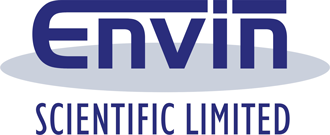
Envin filters help KMOS investigate galaxy formation
Envin Scientific supplied filters to the KMOS project – the K-band Multi-Object Spectrograph, which aims to uncover more details of several aspects of early galaxy formation and growth.
The KMOS galaxy formation project
The KMOS Science Case lists eight different applications for the instrument, ranging from the formation of galactic clusters, and galactic growth, to looking at stars in nearby galaxies and the formation of stars with very high mass. It builds on research already done using instruments that detect photometric redshifts and deepwide-angle optical-IR surveys. KMOS itself has 24 configurable arms, each of which can be used to position pickoff mirrors in the Nasmyth focal plane.
A corresponding 24 integral-field units are used to partition the sub-fields into 14 slices, using precision diamond-machined metal optics to protect against any unwanted thermal effects. Each pickoff covers a patrol field of 7.2 arcminutes, which helps to minimise thermal background, while the IFUs cover a square field of 2.8 arcseconds on each side. With 14 spatial pixels along each side and anamorphic magnification in the IFUs’ foreoptics, uniform sampling of 0.2 arcseconds is achieved, without impairing the sampling of the detector’s spectral resolution element.
Versatile design
“The field of view for each IFU is large enough to allow local sky-subtraction for compact high redshift targets, doubling the effective multiplex gain over systems which require beam-switching,” the KMOS project’s page from the European Southern Observatory states. “A crossed beam-switching mode is also possible for more extended sources or for critical applications which require minimal systematic effects.”
Although the Science Case for KMOS covers a broad range of applications in eight different areas in total, the designers acknowledge that further uses may arise that were not anticipated specifically already. To prepare for this, the design of the instrument itself has been made as versatile as possible – so that any potential applications in the future can be pursued without raising complexity unnecessarily, and without impairing the reliability of the instrumentation or the results obtained.
Check out the Envin blog to better understand how we design bespoke optical filters.

